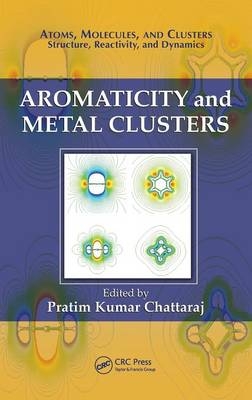
Aromaticity and Metal Clusters
Crc Press Inc (Verlag)
978-1-4398-1334-8 (ISBN)
Metal clusters, an intermediate state between molecules and the extended solid, show peculiar bonding and reactivity patterns. Their significance is critical to many areas, including air pollution, interstellar matter, clay minerals, photography, catalysis, quantum dots, and virus crystals. In Aromaticity and Metal Clusters, dozens of international experts explore not only the basic aspects of aromaticity, but also the structures, properties, reactivity, stability, and other consequences of the aromaticity of a variety of metal clusters.
Although the concept of aromaticity has been known for nearly two centuries, there is no way to measure it experimentally and no theoretical formula to calculate it. In order to gain insight into its exact nature, the authors of this volume examine various indirect characteristics such as geometrical, electronic, magnetic, thermodynamic, and reactivity considerations.
The book begins by discussing the evolution of aromaticity from benzene to atomic clusters. Next, more specialized chapters focus on areas of significant interest. Topics discussed include:
Computational studies on molecules with unusual aromaticity
Electronic shells and magnetism in small metal clusters
A density functional investigation on the structures, energetics, and properties of sodium clusters through electrostatic guidelines and molecular tailoring
The correlation between electron delocalization and ring currents in all metallic aromatic compounds
Phenomenological shell model and aromaticity in metal clusters
Rationalizing the aromaticity indexes used to describe the aromatic behavior of metal clusters
5f orbital successive aromatic and antiaromatic zones in triangular uranium cluster chemistry
This collection of diverse contributions, composed of the work of scientists worldwide, is destined to not only answer puzzling questions about the nature of aromaticity, but also to provoke further inquiry in the minds of researchers.
Indian Institute of Technology, Kharagpur
Aromaticity: From Benzene to Atomic Clusters. On the Measures of Aromaticity. Aromaticity in Metals: From Clusters to Solids. Computational Studies on Molecules with Unusual Aromaticity. Using the Electron Localization Function to Measure Aromaticity. Polarizability of Metal Clusters: A Coarse-Grained Density Functional Theory Approach. Reactivity of Metal Clusters. Electronic Shells and Magnetism in Small Metal Clusters. Using Theory in Determining the Properties of Metal Clusters: Sodium as a Case Study. The Induced Magnetic Field and Its application. A Density Functional Investigation on the Structures, Energetics, and Properties of Sodium Clusters through Electrostatic Guidelines and Molecular Tailoring. Size and Shape-Dependent Structural and Electronic Properties of Metal Chalcogenide Nanoclusters. Correlation between Electron Delocalization and Ring Currents in All Metallic "Aromatic" Compounds. Phenomenological Shell Model and Aromaticity in Metal Clusters. Rationalizing the Aromaticity Indexes Used to Describe the Aromatic Behavior of Metal Clusters. Aromaticity in All-Metal Rings. Synthesis and Structure of Aromatic Alkali Metal Clusters Supported by Molybdenum Metalloligands. 5f Orbital Successive Aromatic and Antiaromatic Zones in Triangular Uranium Cluster Chemistry. Bonding, Aromaticity, and Possible Bond-Stretch Isomerism in an "All-Metal" Cluster—[Be6Zn2]2-. Are Dicationic Chalcogenid Ring Systems Aromatic? Study of Aromaticity in Phosphazenes. Index.
| Erscheint lt. Verlag | 12.11.2010 |
|---|---|
| Reihe/Serie | Atoms, Molecules, and Clusters |
| Zusatzinfo | 58 Tables, black and white; 15 Illustrations, color; 159 Illustrations, black and white |
| Verlagsort | Bosa Roca |
| Sprache | englisch |
| Maße | 156 x 234 mm |
| Gewicht | 793 g |
| Themenwelt | Naturwissenschaften ► Biologie |
| Naturwissenschaften ► Chemie ► Physikalische Chemie | |
| Technik ► Maschinenbau | |
| ISBN-10 | 1-4398-1334-5 / 1439813345 |
| ISBN-13 | 978-1-4398-1334-8 / 9781439813348 |
| Zustand | Neuware |
| Haben Sie eine Frage zum Produkt? |
aus dem Bereich


